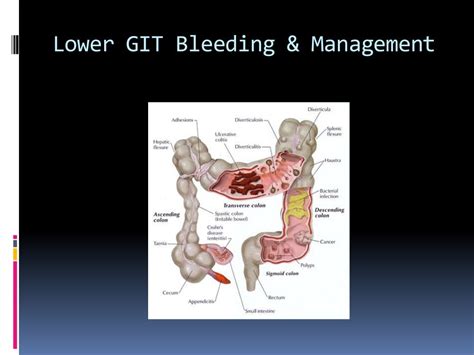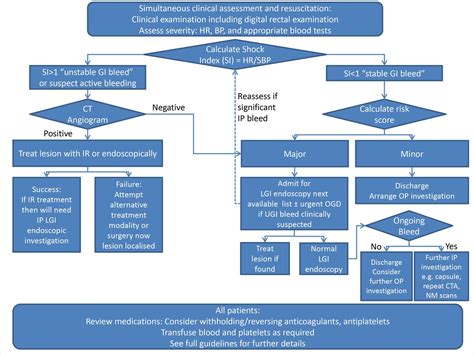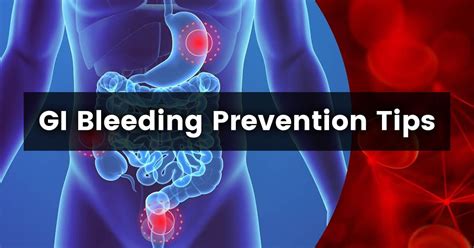Intro
Discover the causes of Lower Gastrointestinal Bleeding, including diverticulosis, angiodysplasia, and colorectal cancer, and learn about symptoms, diagnosis, and treatment options for GI bleeding disorders.
Lower gastrointestinal bleeding, also known as LGIB, is a serious medical condition characterized by bleeding in the lower part of the digestive tract. The lower gastrointestinal tract includes the small intestine, colon, rectum, and anus. LGIB can be a life-threatening condition if left untreated, and it requires prompt medical attention. In this article, we will explore the causes of lower gastrointestinal bleeding, its symptoms, diagnosis, treatment options, and prevention methods.
The importance of understanding lower gastrointestinal bleeding cannot be overstated. It is a common condition that affects millions of people worldwide, and its incidence is increasing due to various factors such as an aging population, increased use of nonsteroidal anti-inflammatory drugs (NSAIDs), and improved diagnostic techniques. Furthermore, LGIB can have significant economic and social impacts on individuals and families, making it essential to address this condition effectively.
Lower gastrointestinal bleeding can be caused by a variety of factors, including diverticulosis, vascular ectasias, inflammatory bowel disease, infectious colitis, and colorectal cancer. Diverticulosis is a condition characterized by the formation of small pouches in the wall of the colon, which can bleed and cause LGIB. Vascular ectasias, also known as angiodysplasia, are abnormal blood vessels in the colon that can cause bleeding. Inflammatory bowel disease, including conditions such as Crohn's disease and ulcerative colitis, can also cause LGIB due to chronic inflammation and damage to the lining of the colon.
Causes of Lower Gastrointestinal Bleeding

The causes of lower gastrointestinal bleeding can be broadly classified into several categories, including vascular, inflammatory, infectious, and neoplastic. Vascular causes include diverticulosis, vascular ectasias, and hemorrhoids. Inflammatory causes include inflammatory bowel disease, such as Crohn's disease and ulcerative colitis. Infectious causes include infectious colitis, such as Clostridioides difficile infection. Neoplastic causes include colorectal cancer and polyps.
Vascular Causes of LGIB
Vascular causes of LGIB are the most common, accounting for approximately 40% of all cases. Diverticulosis is the most common vascular cause of LGIB, followed by vascular ectasias and hemorrhoids. Diverticulosis is a condition characterized by the formation of small pouches in the wall of the colon, which can bleed and cause LGIB. Vascular ectasias, also known as angiodysplasia, are abnormal blood vessels in the colon that can cause bleeding.Diagnosis of Lower Gastrointestinal Bleeding

The diagnosis of lower gastrointestinal bleeding typically involves a combination of clinical evaluation, laboratory tests, and imaging studies. Clinical evaluation includes a thorough medical history and physical examination to identify potential causes of bleeding. Laboratory tests, such as complete blood count (CBC) and blood chemistry tests, can help identify signs of bleeding and anemia. Imaging studies, such as colonoscopy, computed tomography (CT) scan, and angiography, can help visualize the source of bleeding and identify potential causes.
Imaging Studies for LGIB
Imaging studies play a critical role in the diagnosis of lower gastrointestinal bleeding. Colonoscopy is the most commonly used imaging study for LGIB, as it allows direct visualization of the colon and rectum. CT scan and angiography can also be used to visualize the source of bleeding and identify potential causes. CT scan can help identify signs of bleeding, such as blood in the colon or rectum, while angiography can help identify abnormal blood vessels that may be causing bleeding.Treatment Options for Lower Gastrointestinal Bleeding

The treatment of lower gastrointestinal bleeding depends on the underlying cause and severity of bleeding. Mild cases of LGIB may be treated with conservative management, such as bed rest and hydration, while more severe cases may require hospitalization and intervention. Endoscopy, such as colonoscopy, can be used to treat bleeding caused by diverticulosis, vascular ectasias, and hemorrhoids. Surgery may be necessary in cases where endoscopy is not effective or in cases of severe bleeding.
Endoscopy for LGIB
Endoscopy is a critical component of the treatment of lower gastrointestinal bleeding. Colonoscopy is the most commonly used endoscopic procedure for LGIB, as it allows direct visualization of the colon and rectum. Endoscopy can be used to treat bleeding caused by diverticulosis, vascular ectasias, and hemorrhoids. During endoscopy, a flexible tube with a camera and light on the end is inserted into the colon or rectum, allowing the doctor to visualize the source of bleeding and apply treatments, such as cauterization or clipping.Prevention of Lower Gastrointestinal Bleeding

The prevention of lower gastrointestinal bleeding involves a combination of lifestyle modifications and medical interventions. Lifestyle modifications, such as a healthy diet and regular exercise, can help reduce the risk of LGIB. Medical interventions, such as screening for colorectal cancer and polyps, can help identify potential causes of bleeding. Avoiding NSAIDs and other medications that can cause bleeding can also help prevent LGIB.
Lifestyle Modifications for LGIB Prevention
Lifestyle modifications play a critical role in the prevention of lower gastrointestinal bleeding. A healthy diet rich in fruits, vegetables, and whole grains can help reduce the risk of LGIB. Regular exercise, such as walking or jogging, can also help reduce the risk of LGIB. Avoiding smoking and limiting alcohol consumption can also help reduce the risk of LGIB.What are the symptoms of lower gastrointestinal bleeding?
+The symptoms of lower gastrointestinal bleeding include rectal bleeding, abdominal pain, and weakness or fatigue. In severe cases, LGIB can cause shock, low blood pressure, and even death.
How is lower gastrointestinal bleeding diagnosed?
+Lower gastrointestinal bleeding is diagnosed using a combination of clinical evaluation, laboratory tests, and imaging studies. Colonoscopy is the most commonly used imaging study for LGIB, as it allows direct visualization of the colon and rectum.
What are the treatment options for lower gastrointestinal bleeding?
+The treatment of lower gastrointestinal bleeding depends on the underlying cause and severity of bleeding. Mild cases of LGIB may be treated with conservative management, such as bed rest and hydration, while more severe cases may require hospitalization and intervention.
In conclusion, lower gastrointestinal bleeding is a serious medical condition that requires prompt attention and treatment. Understanding the causes, symptoms, diagnosis, treatment options, and prevention methods of LGIB is critical for reducing the risk of this condition and improving patient outcomes. By working together, healthcare providers and patients can reduce the incidence and severity of lower gastrointestinal bleeding, improving the quality of life for millions of people worldwide. If you have any questions or concerns about lower gastrointestinal bleeding, please do not hesitate to reach out to your healthcare provider. Share this article with your friends and family to raise awareness about this important health topic.
